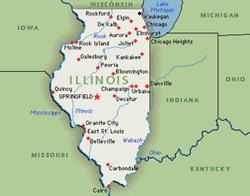

According to the data, over 12.8 million (12,830,632) people live in Illinois, up 3.3 percent since 2000. The 2010 Census represented the most massive participation movement ever in the country with 74 percent of households voluntarily returning their census forms by mail. Illinois had a 76 percent participation rate, above the national average.
“The Census is an important tool to ensure communities of every size get their fair share of funding for vital services and programs, and to provide accurate data to plan for the future,” said Director Ribley. “Thanks to our collaboration with community organizations throughout the state, this year’s census yielded one of the largest response rates ever.”
The top five counties in Illinois based on population are: Cook, DuPage, Lake, Will, and Kane. The five largest cities are Chicago (2,695,598), Aurora (197,899), Rockford (152,871), Joliet (147,433), and Naperville (141,853), with Springfield (116,250), Peoria (115,007), Champaign (81,055), Bloomington (76,610) and Decatur (76,122) having the largest populations downstate.
Cook County continues to have the highest population in the state with nearly 5.2 million residents (5,194,675), a decrease of 3.4 percent. This includes approximately 2.7 million residents in the City of Chicago, which saw a 6.9 percent decrease from 2000.
Illinois has seen an increase in minorities in the state over the last decade. Asians experienced the largest increase – 163,331 residents since 2000, a 38.6 percent increase. People reporting two or more races on their census form increased by 54,966 or 23.4 percent. People reporting Hispanic or Latino origin increased by nearly 500,000 residents, or 32.5 percent. The voting age population in Illinois, people 18 years and over, increased by over 500,000 residents, or 5.8 percent.
The U.S. Census Bureau conducts the census every 10 years, as required by the U.S. Constitution. Census questionnaires were mailed or delivered to every household in the United States beginning in early 2010. In December 2010, apportionment data was announced; this information is used to determine the number of Congressional seats each state receives.
The data received today, known as the redistricting data, will allow state officials to realign congressional and state legislative districts as part of the redistricting process, taking into account population shifts since the last census and assuring equal representation for their constituents.
For more info on the 2010 Census, visit http://Census.Illinois.gov.
